We propose to embark on one of the most interesting cultural routes in Santander, following in the footsteps of the most relevant personalities who left their mark on the city: the “Illustrious of Santander”.
This is a unique experience in which you can get to know the places that were important in the lives of these significant figures, whether in the cultural, artistic, scientific, or social sphere in the history of Santander. It's an opportunity to remember, recognize, and acknowledge these individuals.
With this route, we also aim to highlight the different neighborhoods and areas of the city where a particular building is, or was, located, and where each of our illustrious figures studied, worked, spent summers, was born, lived, or passed away.
The “Illustrious of Santander” route is a living project, with progressively added personalities.
Would you like to discover, plaque by plaque, who these renowned figures were? Below, we provide the location of each plaque, as well as the most relevant information about each of them.
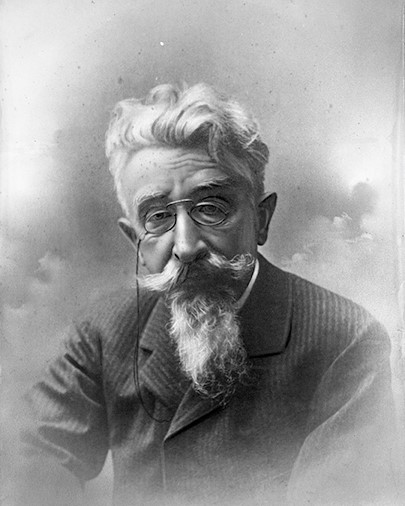
Cantabrian writer
Location of the plaque: C/Hernán Cortés, 9 (Edificio Macho)
1833-1906
José María de Pereda y Sánchez Porrúa was born in the municipality of Polanco on 6 February 1833, and when he was 10 years old he moved with his parents to Santander, to Cuesta del Hospital, a street near the fishermen's neighbourhoods, whose population served as a source of inspiration for the novelist's writings.
He studied at the same secondary school as Menéndez Pelayo, Gregorio Marañón and Gerardo Diego. After finishing his studies in Humanities, in the autumn of 1852, he moved to Madrid to take preparatory courses to enter the Artillery Academy in Segovia. He took part in the gatherings at the Café de La Esmeralda andbailes de Capellanes. He writes his first play, a drama, “La fortuna en un sombrero” (Fortune in a Hat).
Later he returned to Santander where he collaborated with the newspaper La Abeja Montañesa, and published under the pseudonym "Paredes". These were theatre reviews and sketches of local customs, which were recreated in the theatre of Santander. Other of his writings were published anonymously, signed with the first letter of his surname.
The first work in which he made his real name known was "Escenas montañesas", published in 1864.
The novel that aroused most interest in the Cantabrian capital was "Sotileza", in 1885, a faithful portrait of the fishing village with memories of her childhood, within an idyll of the protagonist with different suitors, with a tragic ending of a sea galley. This "admirable novel" was praised by the erudite Marcelino Menéndez Pelayo, who saw in Pereda the best contemporary representative of the letters of his native land and the one who best knew how to capture the local customs of Santander.
"Pachín González" can be considered Pereda's last great production, based on a boy's insistent search for his mother, who could have died as a result of the explosion of the steamship Cabo Machichaco, loaded with dynamite and docked at the Santander quay. The real historical event occurred on 3 November 1893, causing 590 victims and more than 2,000 injured, along with the destruction of part of the city.
His companion, Benito Pérez Galdós, emphasised his vigorous personality and the uniqueness of his literary work, which made him different from the writers of his time.
In the spring of 1904 he suffered a stroke that left him hemiplegic on his left side, and he died on 1 March 1906 in the house that existed on the site where the plaque has now been installed the plaque as an illustrious figure of the city, because José María de Pereda is considered to be the greatest representative of the regionalist realist novel.

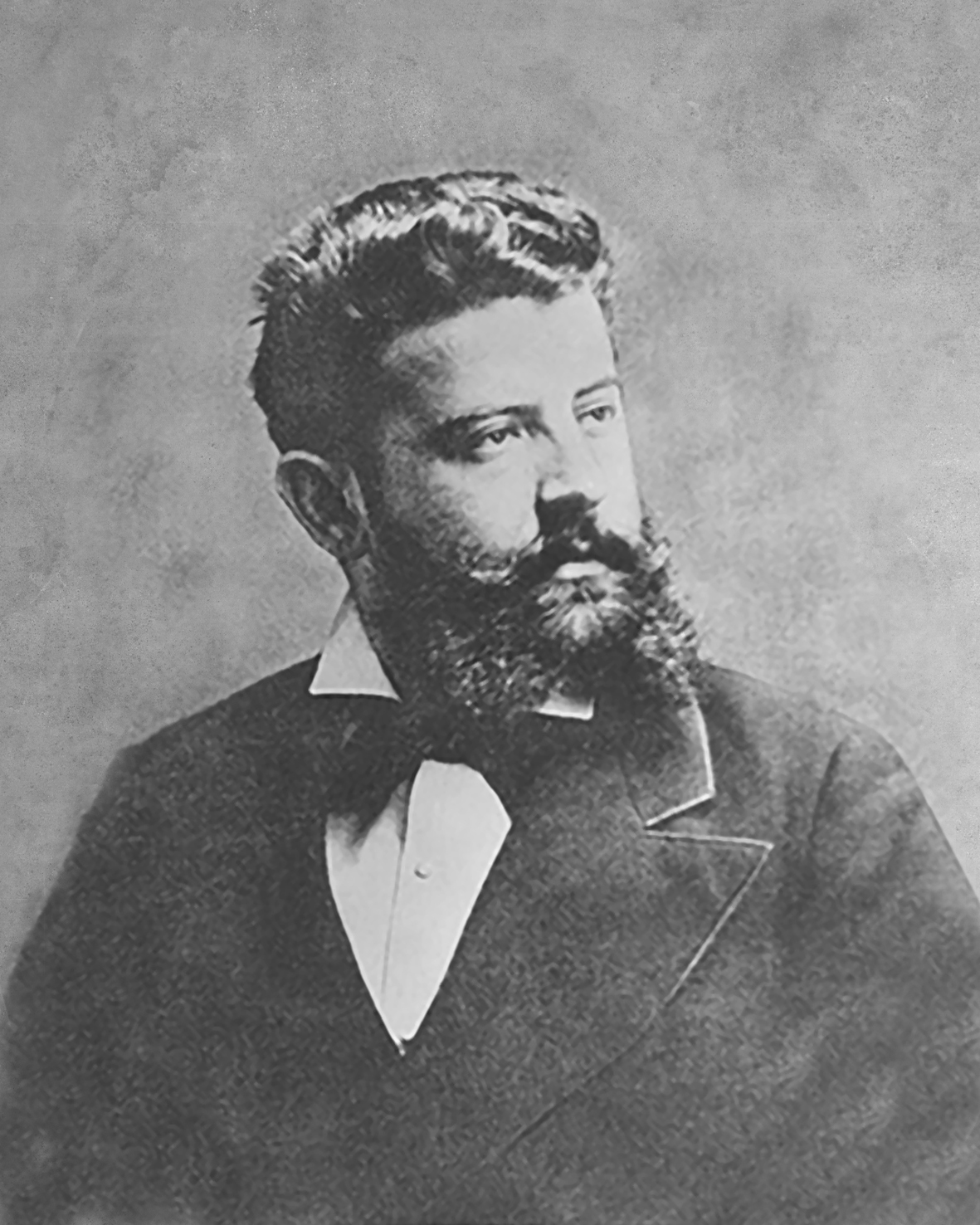
Naturalist. One of the most outstanding natural scientists of the 19th century.
Location of the plaque: Paseo del General Dávila, 20
1845-1904
Augusto González de Linares was born on 28th October 1845, in the Cantabrian town of Valle de Cabuérniga, where he completed his early studies at the Escolapios de Villacarriedo and later at the Santander Institute. He studied Natural Sciences and Law in Valladolid and Madrid, and between 1867 and 1869 he held the post of assistant professor of Mineralogy and Geology at the Museo de Ciencias Naturales in Madrid. He was also a substitute for the chair of Natural History at the Instituto de Noviciado in the capital, later known as the Cardenal Cisneros Institute.
In 1870 he completed his doctorate in Natural Sciences and two years later obtained, by competitive examination, the chair of Natural History at the Albacete Institute, which he held for only four months, leaving it when he obtained the university chair of Natural History at the University of Santiago de Compostela.
In 1881 he was appointed professor of Mineralogy and Botany at the University of Valladolid, where he played an active part in the promulgation of the Royal Order of 1886, which created the first Spanish Institute of Marine Biology, the Maritime Station of Experimental Zoology and Botany in Santander, which he directed until his death. The purpose of the station was to study the flora and fauna of the coasts and adjacent seas, to apply this knowledge to the development of maritime industries and to form or increase the scientific collections of museums and teaching centres. At the time, there were only four such centres in the world. Today the station is still active under the name of the Centro Oceanográfico de Santander.
In 1879 Marcelino Sanz de Sautuola discovered the Altamira cave, an event that led many scholars to issue contradictory reports about the age of the paintings. However, at the session held on 3 February 1886 at the Royal Spanish Society of Natural History, González de Linares was firmly in favour of the authenticity of the paintings.
González de Linares made several important discoveries, including demonstrating the existence of Wealdiente formations in Cantabria. He also managed to dissect a whale, demonstrating that Pierre-Joseph Van Beneden had been mistaken in some anatomical information.
He died on 1 May 1904, in the house that was located at the current number 20 Paseo del General Dávila, which is why it has been decided to place the plaque as an illustrious figure of Santander in this place.
The day after his death, an extraordinary municipal plenary was convened in Santander to express the feelings of the Corporation for the death of "such an eminent scholar", and by which he was declared an Illustrious Son of Santander.

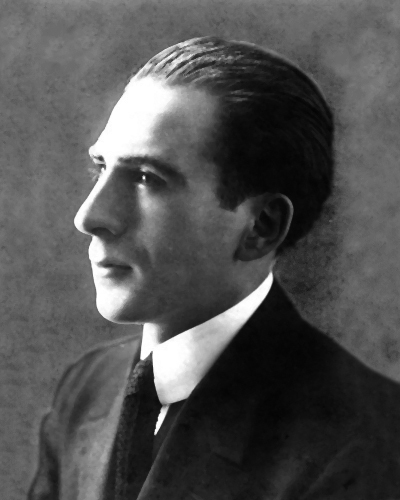
Painter
Ubicación de la placa: C/ Sevilla, 6 (Paraninfo de la Universidad de Cantabria)
1893-1978
Luis Quintanilla Isasi was born on 12th June 1893 in Santander. His childhood was spent in the bosom of a 19th century bourgeois family, and following his father's wishes, he prepared himself to study Architecture in Deusto. He soon abandoned this idea to devote himself to painting, in order to be able to travel and have free time for his great hobby. At the same time he decided to study Nautical Studies, although he soon realised that painting was not compatible with the marine world.
In 1912, when Cubism was changing the art world, he moved to Paris to devote himself to painting. From Paris he travelled to Germany just before the war. There he experienced first-hand the works of German Expressionism. The First World War brought him back to Spain, where he exhibited his Cubist works, which were not understood by the public.
In 1938, during the term of office of the Republican Prime Minister Juan Negrín, Spain decided to present a Pavilion at the New York World's Fair, which was to be held in 1939. Luis Quintanilla was commissioned to create a series of frescoes to be exhibited at the event.
The work entitled ‘Ama la paz y odia la guerra’, consisting of five frescoes, eleven and a half metres long and two metres high, was not exhibited at the Fair, although it was shown to the public on two subsequent occasions.
Shortly afterwards they were thought to have been destroyed, until in 1990 they appeared in the corridors of the legendary Bleecker Street Cinema in New York. This work is undoubtedly Luis Quintanilla's most representative work, in which he denounces pain, destruction and horror, and whose inspiration came from the Spanish Civil War.
In 2006 the University of Cantabria bought these works.
After many years in exile, in 1976 he returned to Spain, where he died two years later, on 16 October 1978, without being able to see the two anthological exhibitions devoted to him by the Museo de Bellas Artes de Santander (November 1978) and the Ministry of Culture (February-March 1979).
Luis Quintanilla is considered to be a multifaceted artist, as in addition to being a painter, he was also an engraver, leather embosser, ceramist and writer.
Since 2007 the frescoes of 'Ama la paz y odia la guerra' (Bien de Interés Cultural) have been on permanent display inside the Paraninfo de la Universidad de Cantabria, a place whose entrance proudly bears the plaque of Illustrious that the city of Santander has awarded him.

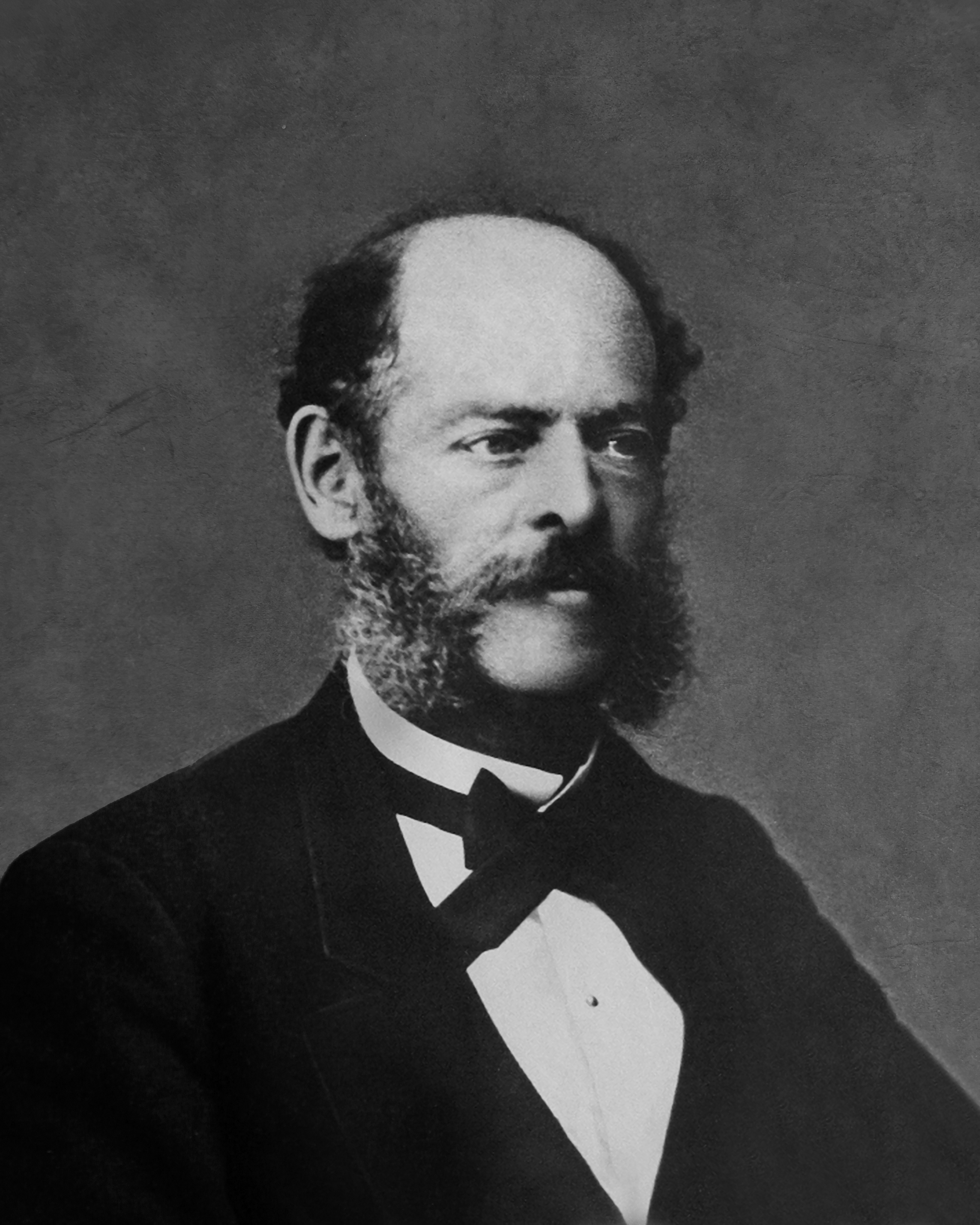
Naturalist and prehistorian
Location of the plaque: C/ Marcelino Sanz de Sautuola, 10
1831-1888
Marcelino Sanz de Sautuola y Pedrueca was born in Santander on 2 June 1831, into a well-known noble family, as his father was mayor of Santander between 1859 and 1860. They also owned a beautiful manor house in Puente San Miguel. He studied for his bachelor's degree in Philosophy and Letters in Santander, followed by law studies at the University of Valladolid.
After completing his university studies, he returned to Santander to devote himself to the administration of the family estate, while at the same time he felt attracted to the cultural and economic life of Santander. At the same time, he developed other interests, such as the study of natural sciences, botany and geology, which led him to build up a magnificent archive and library in his home, as well as a notable collection of minerals and fossils.
As a prominent member of Santander's enterprising and cultured commercial and progressive bourgeoisie, he promoted exhibitions and was appointed Secretary of the Junta Montañesa. He also created the Cuerpo de Bomberos Voluntarios de Santander (Santander Volunteer Fire Brigade) and, among other activities, held executive posts on the Provincial Census Board; vice-president of the League of Taxpayers; executive of the Commission of Alamedas and Promenades; member-secretary of the Junta de Obras del Puerto de Santander (Board of Works of the Port of Santander) and provincial deputy and member of the Real Sociedad Económica Cántabra (Royal Cantabrian Economic Society).
He placed his knowledge of nature and agriculture at the service of Santander's progress. He was the person who introduced the eucalyptus tree to Cantabria in 1863, importing it from the Hieres Islands (France), and acclimatised the first eucalyptus tree planted in the province of Santander in his ancestral home in Puente San Miguel.
In 1866 he was appointed a corresponding member of the Real Academia de la Historia (Royal Academy of History), and in 1872 he became vice-chairman of the Comisión de Monumentos de la Provincia de Santander (Monuments Commission of the Province of Santander).
Around 1875, Modesto Cubillas, a sharecropper on his estates, informed him that around 1868 he had discovered a cave that might be of interest to him. It was not until 1979, when, while collecting abundant Palaeolithic remains, his eight-year-old daughter María Justina, who was accompanying him, encouraged him to look at the ceiling of the cave where they were "Look, Dad, painted oxen!". She had just discovered the paintings in the cave of Altamira, considered the Sistine Chapel of cave art. Sautuola was surprised by the species represented and the quality of the paintings, but he made an accurate and lucid analysis, attributing the paintings to Prehistory, specifically to the Palaeolithic period. Prehistoric authorities, led by Gabriel de Mortillet and Émile Cartailhac, rejected the idea that the Altamira paintings were the work of prehistoric man, and some, during the International Congress of Lisbon in 1880, even veiled accusations that they had been painted recently.
The work of Marcelino Sanz de Sautuola did not begin to be recognised until years later. In 1902, Henri Breuil published the results of his work at the Congress of the Association Française pour l'Avancement des Sciences, confirming the authenticity of the Altamira finds. After the discovery of these findings, Cartailhac publicly rectified his position in the journal L'Anthropologie with the publication of the article "La caverna de Altamira, España, mea culpa de un escéptico" in which he acknowledged the mistake he had made 20 years earlier. But Sanz de Sautuola, who died fourteen years earlier, did not live to enjoy the restitution of his honour, nor the subsequent scientific confirmation of his premonitions.
Marcelino Sanz de Sautuola died on 30 March 1888, in the same house where he was born and lived, located at 1 Pedrueca Street, where the plaque has been placed as Illustrious of Santander. Inside the building is his library, which contains the valuable bibliographical legacy that this distinguished intellectual left to his native city.

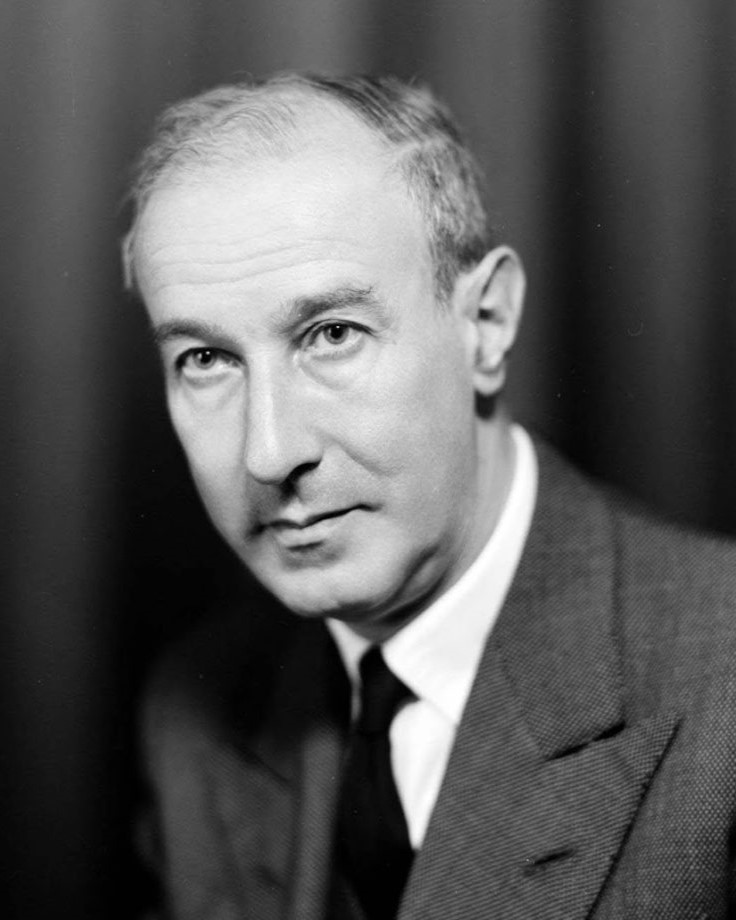
Outstanding poet of the Generation of 27
Location of the plaque: C/ Calvo Sotelo, 8 (current INSS building)
1896-1987
Gerardo Diego Cendoya was born on 3rd October 1896, in the family home, located on the left hand side of the fourth floor of number 7 Atarazanas Street. After the city fire of 1941, a new building was constructed in the same place, today Calvo Sotelo 8, where the the plaque has been placed as "Ilustre de la ciudad" (Illustrious of the city).
Atarazanas was a commercial street, with a great deal of activity of all kinds and Diego always fondly remembered the neighbourhood of his childhood. In fact, his "jinojepas", poems that were good-humoured mockery without venom inside, he signed them with the pseudonym of Jaime de Atarazanas.
From an early age he showed an interest in the world of arts and literature. He studied philosophy and literature at the University of Deusto. He took his exams in Salamanca and his final year in Madrid, where he obtained his degree with excellent marks. In 1917 he won a literary prize from the Calleja publishing house.
In 1918 he published his first work, a story, “La caja del abuelo”, in El Diario Montañés. A year later, already in Madrid, his first publications began in the magazines Vanguardia, Grecia, Cervantes and Ultra. He also participates in Madrid gatherings. In 1919 he participated in a presentation at the Ateneo de Santander on “New poetry”, which generated a strong controversy. In 1920, following the advice of Ramón Gómez de la Serna and León Felipe, he published “El romancero de la novia”, his first book of verses.
Guided by José María de Cossío, he began his studies on poetry of the Golden Century, discovering the manuscript of the anonymous “Fábula de Alfeo y Aretusa” in the Menéndez Pelayo Library.
In 1924 he discovered in the Cossío library a baroque eclogue dedicated to Isabel de Urbina and edited the text, publishing another avant-garde collection of poems, “Manual de Espumas” which received the National Literature Prize the following year.
In Santander he directs two of the most important magazines of 27, Lola and Carmen, establishing relationships with the Generation of 27 and publishing his later famous anthology, “Poesía española: 1915-1931” (Spanish Poetry: 1915-1931).
He was a professor of Language and Literature at the Santa Clara Institute in Santander, and his student was the Santander poet Matilde Camus.
In 1961 Gerardo Diego published the book “Mi Santander, mi cuna, mi palabra”, with poems inspired or suggested by his hometown and the province. In 1976 he brought together his avant-garde lyrics in “Poesía de Creación” and a year later all of his Soria poems in “Soria sucedida”.
The poet from Santander was, during his lifetime, one of the most recognized authors in Spain and received honors and awards until the end of his days, such as the National Poetry Prize on two occasions (1925 and 1956) or the Gold Medal for Work. in 1968. But his great recognition came in 1979, when he was awarded the Miguel de Cervantes Prize, at the same time as Jorge Luis Borges.
In 1980 he received the Gold Medal from the City of Santander, and the next day he was awarded an Honorary Doctorate from the University of Cantabria. He died in his home in Madrid on July 8, 1987, becoming a prominent member and one of the driving forces of the Generation of '27. He bequeathed to his hometown, his library, a true jewel, essential to get closer to the universe of magazines. Spanish literary works during the 20th century, and to delve into the intellectual universe of the writer.

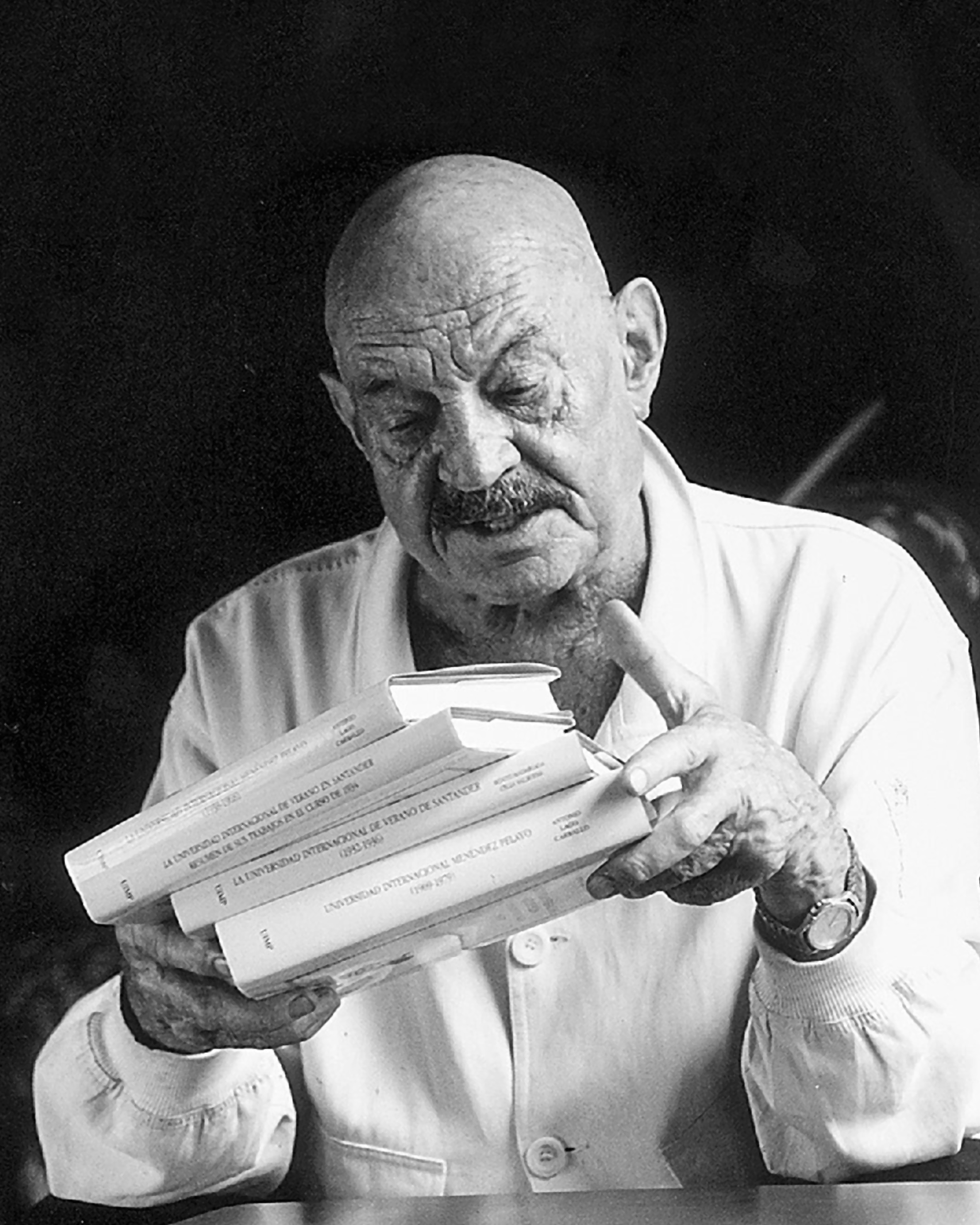
Poet
Location of the plaque: C/ Cádiz, 20
1922-2002
José Hierro del Real was born in Madrid on April 3, 1922. When he was only two years old, his family moved to Santander, where he studied at the Los Salesianos College and later at the School of Industrial Experts, despite his great inclination towards the letters.
It was in 1936 when he obtained his first literary prize, in a contest at the Ateneo Popular de Santander, for a story with a Japanese atmosphere, "La leyenda del almendro". Between 1936 and 1937 his first poems were published in a newspaper in Gijón and in the Romancero General de la Guerra de España.
In 1944 he moved to Valencia, where he performed different jobs, as he confesses in the extensive poem “Historia para muchachos”. At that time he also collaborated in various magazines and began to write the first poems of what would be his first book.
In 1946 he returned to Santander. His work in the construction sector does not prevent him from participating in Santander's cultural life, as editor-in-chief of the magazines of the Santander Chamber of Commerce and the Agrarian Chamber and, somewhat later, of the magazine Economía Montañesa. Later he meets Gerardo Diego and continues his collaborations in Proel magazine. In 1947 he published his first book, “Tierra sin nosotros”, and obtained the Adonais Prize with his second work, “Alegría”.
His residence was at number 20 Calle Cádiz, where the plaque as Illustrious of Santander has been hung in his memory. The bar located to the right of this portal was his usual writing place, since José Hierro had the superstition of not being able to write in his own house.
In 1952 he moved to Madrid and began working at the Editora Nacional and in the Cervantes Institute section of the Higher Council for Scientific Research. In 1953 he obtained the National Prize for Literature. At the end of the 1950s he directed the Poetic Tertulia of the Ateneo de Madrid.
Later, in 1965, he left his job at Editora Nacional and became part of the staff of Reader's Digest magazine. In 1966 he joined Radio Nacional de España, until his retirement in 1987.
In 1981, at the age of 59, he received the Prince of Asturias Award; in 1990 the National Prize for Spanish Letters and in 1995 the IV Reina Sofía Prize for Ibero-American Poetry and he was named Doctor Honoris Causa by the UIMP of Santander. Three years later he is awarded the Cervantes Prize.
In 1999 he was elected Academician of the Royal Academy of Language, a position that he did not occupy because he died before reading his entrance speech. The following year he was awarded the Miguel Hernández Prize and at the age of 80, a few months before his death, he was named an Honoris Causa Doctor by the University of Turin.
José Hierro died on December 21, 2002 and since March 28, 2003, his remains have been honored in the Pantheon of Illustrious Persons of Santander.
The poet Pepe Hierro was always linked to Santander, where he spent his childhood, and named him his Adoptive Son, in addition to paying tribute to him on April 25, 2008 by placing a sculpture on the Paseo Marítimo, inspired by the verses of one of his poems about the bay. santanderina: "If I die, let them put me naked, naked by the sea. The gray waters will be my shield and there will be no need to fight". This author is considered one of the greatest exponents of postwar social poetry.

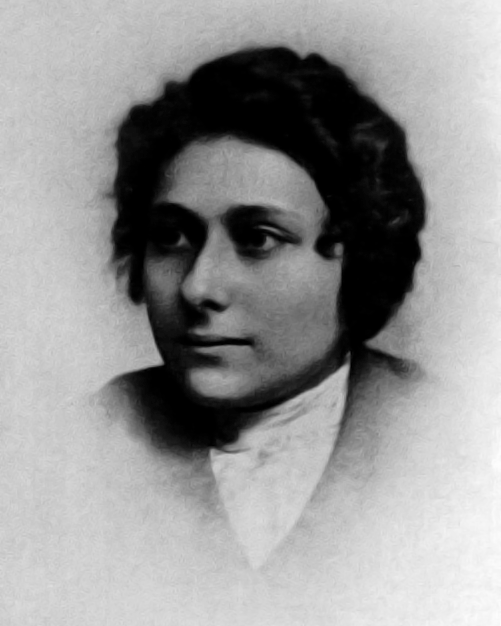
Cubism's most important painter
Location of the plaque: C/ Santa Lucía, 32
1881-1932
María Gutiérrez Cueto, known as María Blanchard, was born on 6 March 1881 in Santander into a wealthy family, as her father was the editor of the newspaper El Atlántico.
Despite her health problem, a malformation resulting from kyphoscoliosis with a double deviation of the spine that would condition part of her life, in 1903 she began her training in Madrid, in the studio of Emilio Sala. The following year he moved to the studio of Fernando Álvarez de Sotomayor, who encouraged him to take part in the National Exhibition of the San Fernando Royal Academy of Fine Arts, with the work "Gitana", which is currently on display in the Museum of Modern and Contemporary Art of Santander and Cantabria.
In 1907 he won the third medal for painting at the National Exhibition with his work "Los primeros pasos" (The First Steps). At that time, both the then Provincial Council of Santander and the City Council granted her scholarships to continue her studies in Paris, where she arrived in 1909.
In the French capital she was a pupil of Anglada Camarasa at the Vitti Academy, and the love that her teacher passed on to her for impasto was manifested in “Ninfas encadenando a Sileno” (Nymphs Chaining Silenus), her only mythological painting, which earned her another medal at the National Exhibition of Fine Arts.
By the beginning of 1914, María had exhausted the extensions of her scholarships, but she had become involved with the main ideologues of the Cubist avant-garde (Pablo Picasso, Diego Rivera, Juan Gris, etc.), who influenced her to take up Cubism. When the war broke out, he returned to Spain, to the family home in Madrid.
The need for a stable job led her to become a drawing teacher, obtaining a place at the Escuelas Normales of Magisterio in Salamanca. But she was not well received there, and decided to return to Paris. From then on, she took on her mother's surname, Blanchard, in an attempt to appear more French.
She died in the French capital in 1932. In 2012 her work was vindicated at Reina Sofía Museum with an exhibition curated by María José Salazar, and today most of her work is on display at the Museo Reina Sofía.
Given that María Blanchard is considered the most important woman of cubism, it has been decided to place the plaque as Illustrious of Santander in the doorway of the building where this great artist was born.

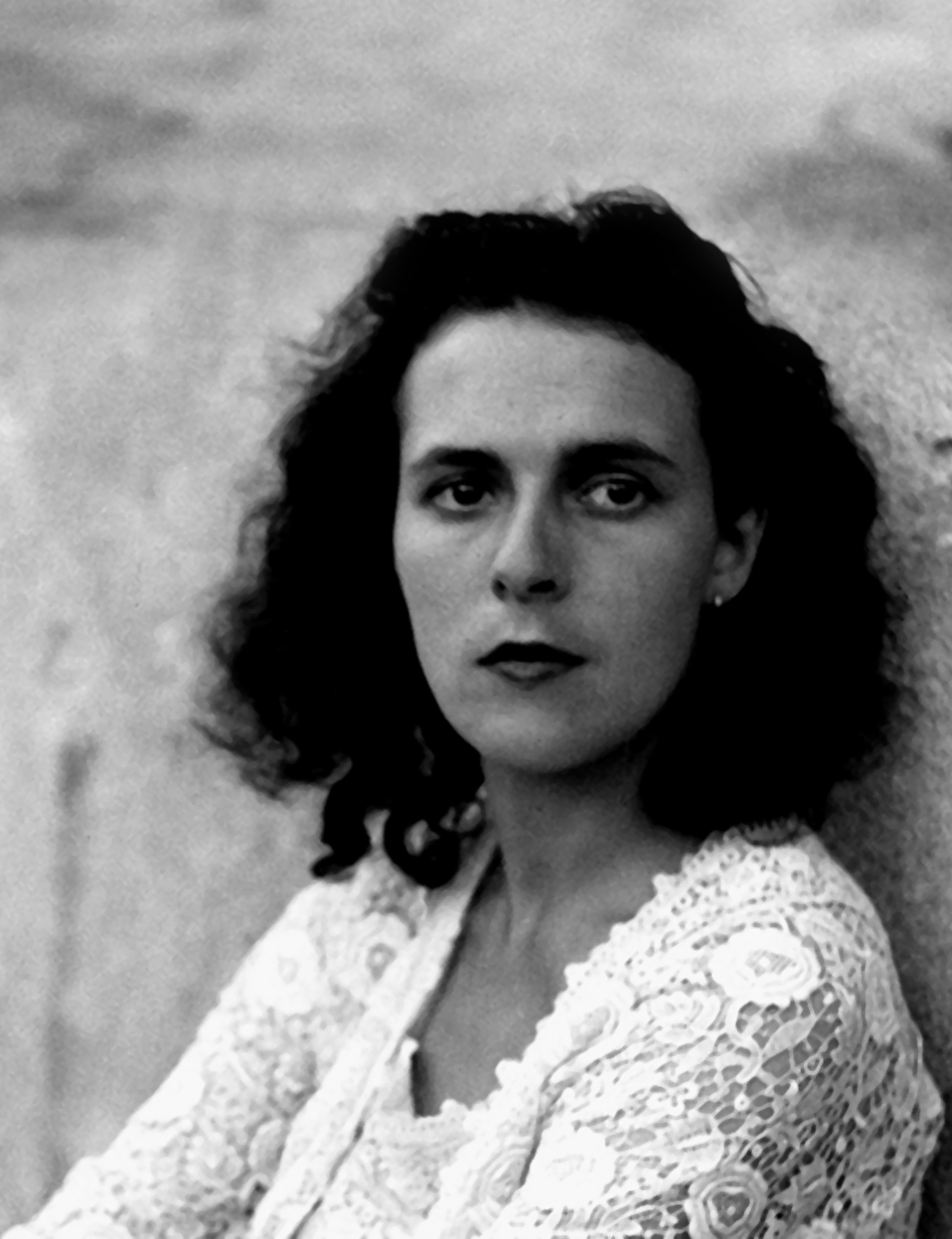
British surrealist painter.
Location of the plaque: Parque del Doctor Morales
1917-2011
Mary Leonora Carrington was born on 6 April 1917 into a wealthy family in Lancashire, England. At the age of three they moved to Crookhey Hall, a neo-Gothic castle surrounded by immense gardens and woodland, which Carrington immortalised in works such as "Green Tea". The oral accounts of her childhood nurtured an imagination that soon led to her first writings full of fables and an early vocation for painting.
After being expelled from several Catholic schools, she began to study art, first in Florence, then in Paris and London, under the guidance of Amédée Ozenfant.
Her encounter with Surrealism came with her visit to The International Surrealist Exhibition in London in 1936. A year later he moved with Max Ernst to Paris, the centre of the Surrealist debates. In 1938, they settled in Saint-Martin-d'Ardèche, where they developed their respective visual imaginaries into a kind of total work of art. At the same time, Carrington began to publish her first books, illustrated with collages by Ernst, such as The Oval Lady and The House of Fear.
With the outbreak of World War II Ernst is arrested as an enemy of France and Carrington is forced to flee to Spain. In Madrid she suffered an episode of sexual violence and was admitted to the Doctor Morales sanatorium for the mentally ill in Santander. In 1943 she left the sanatorium, although her time there was traumatic, it also allowed her to develop a freer and more veiled autobiographical visual vocabulary, which she applied at that time to works now considered classics, such as "Green Tea".
From then on Carrington was a constant exile, but she also took on a more prominent role in the activities that Marcel Duchamp, André Breton and others set in motion in New York City.
In 1943 she moved to Mexico, where she came into contact with a colony of artists who had fled the war and with whom she shared the trauma and also the urge to survive. This new family included artists such as the photographer Emerico "Chiki" Weisz, whom she married; the photographer Kati Horna and her husband, the Spanish artist José Horna; and the painter Remedios Varo and the poet Benjamin Péret, whom she had met in Paris.
Leonora Carrington was the last representative of the surrealist movement. She was considered ill because she embodied a type of woman who did not conform to the roles reserved for women at the time. This traumatic experience was reflected in her pictorial work and in a book of her memoirs. She died in Mexico on 25 May 2011, the country where she lived most of her life.
The plaque has been placed as an illustrious figure of the city in the Parque del Doctor Morales, the location of the former sanatorium where she was admitted between 1940 and 1943.

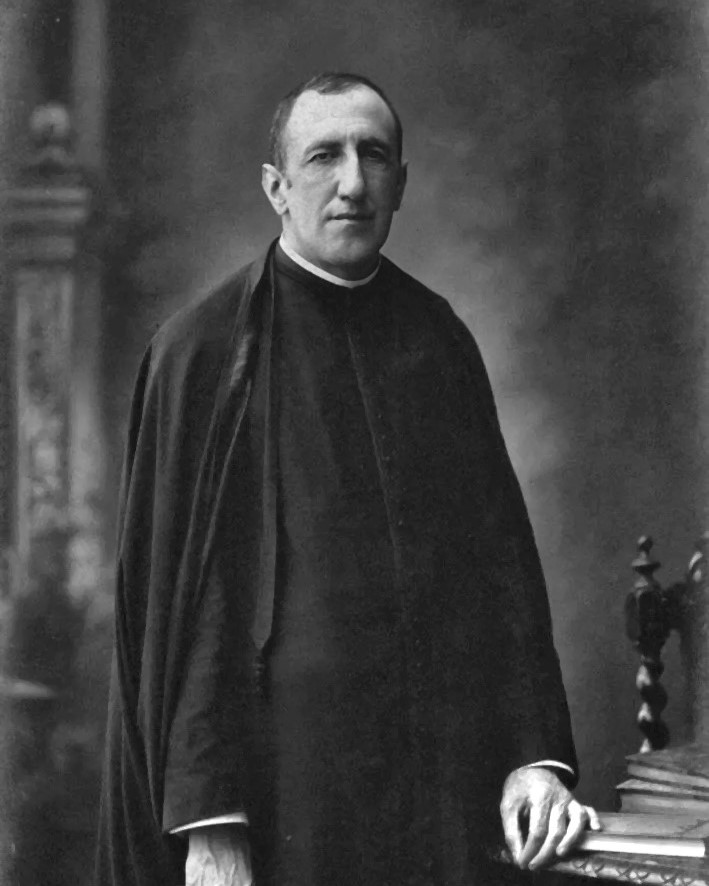
Priest and folklorist
Location of the plaque: C/ Daoíz y Velarde, 13
1869-1956
Sixto Córdova y Oña was born in Calle Atarazanas in Santander on 28th March 1869. He began his religious training at the age of 12 at the Monte Corbán Seminary, officiating his first mass at the age of 14. From 1891 he began teaching at the same Seminary in Corbán. He sang his first mass on 1 October 1893, and became parish priest of the church of Santa Lucía in Santander in 1905, a post he held for 50 years.
He was a precursor of the work of rescuing the oral tradition, for which he travelled through villages, archives, convents, manor houses, cottages, at festivities, during the harvest, in the "jilas", etc., with an undoubted pedagogical interest. During his travels he also collected ethnographic aspects of customs, with his camera.
When he was only 7 years old, his family moved to Polanco, where he became friends with the writer José María Pereda. Years later, Sixto published "La vida en Cumbrales" with ethnographic data and customs of Polanco.
His work compiling songs from the villages won him the Folklore Prize of Ateneo de Santander in 1922. This "Cancionero" would consist of four books: the first was entitled "Cancionero infantil español", and the rest "Cancionero de la provincia de Santander", published in 1947, 1952, and 1955, the latter three being his most important work.
In 1993 he won the prize in the International Competition held in homage to the novelist José María de Pereda.
A lover of photography, he created an archive of 384 photographic objects which included photographs of family gatherings, excursions, trips, portraits, religious snapshots, and of which he was the main author. Julio García de la Puente and Emilio Wünsch also collaborated in this archive along with his brother Alfredo Wünsch. In 2008 this collection became the property of the Centro de Documentación de la Imagen de Santander (CDIS).
Later he published "Santander, su Catedral y obispos", dedicated to Bishop Eguino y Trecu and in 1955 he wrote his last book "Seisena V".
He died in Santander on 15 April 1956. His remains have rested in the Pantheon of Illustrious Persons in Santander since 2010. That same year, the family of Sixto Córdova donated to the Botín Foundation the archive of the musicologist from Santander, consisting of more than a thousand documents, including a letter from José María de Pereda dated in Polanco, in July 1896, and another from Jesús de Monasterio, dated in Madrid on 27 November 1895. This archive became part of the collection of the Centro de Documentación e Investigación de la Música en Cantabria (CDIMC).
As a tribute, the plaque has been placed as Illustrious of Santander, in the doorway number 13 of Daoíz y Velarde street, where this renowned parish priest, lover of Cantabrian folklore, lived.


Pianist and orchestra director
Location of the plaque: Intersection C/ Aduana with C/ Ataúlfo Argenta
1913-1958
Ataúlfo Exuperio Martín de Argenta Maza, known as Ataúlfo Argenta, was born in 1913 in Castro Urdiales, into a humble family. His special talent for music soon led him to take music theory, violin and piano lessons.
In 1925 he moved with his family to Madrid, enrolling at the Real Conservatorio, where he studied under the supervision of the composer Manuel Fernández Alberdi. Argenta's talent soon became visible, making him the most promising pianist at the conservatory. In 1930 his father died and Argenta became the head of a family whose only member was a widowed mother. This situation led him to leave the conservatory and start working in an office of the State Railways, but he was reluctant to give up music.
Later, the Conservatorio de Lieja offered him the possibility of continuing his studies in Belgium, so he left Spain and began to study under Armand Marsick. At the age of 28, he obtained a scholarship at the Kassel Conservatory, under the supervision of Carl Schuricht, who shaped his destiny as a orchestra director. He became a teacher and professor at the conservatory where he stayed for two years, until he returned to Spain to create the Orquesta de Radio Nacional, where he conducted daily concerts.
In 1940 the Orquesta Nacional de España was founded, and seven years later Argenta joined it as chief conductor. In 1948 he guest conducted the London Symphony Orchestra, becoming from that moment on an internationally prestigious conductor, which led him to temporarily occupy the post of guest conductor at the Orchestre National de France.
An important date in his career was 9 August 1953, when he conducted the complete cycle of Beethoven's "Nine Symphonies" with the National Orchestra in the Plaza Porticada (Plaza de Velarde) as part of the Festival Internacional de Santander.
His musical activity received numerous prizes and awards: the Cruz de Isabel la Católica and the posthumous Gran Cruz de Alfonso X el Sabio, as well as a full membership in the Real Academia de Bellas Artes de San Fernando (1956).
Ataúlfo Argenta died prematurely, at the age of 44, in Los Molinos (Madrid) in 1958, cutting short the most promising and universal Spanish orchestral conducting career of the time. Days earlier he had achieved enormous success with Georg Friedrich Haendel's Messiah, conducting the Orquesta Nacional de España and the Coro del Orfeón Donostiarra . He is considered by the specialised critics as the most outstanding musical director of the central decades of the Spanish 20th century.
As a tribute to the pianist and conductor from Castro Urdiales, the plaque has been placed as an illustrious figure of the city plaque has been placed at the beginning of the street that bears his name, which starts in the Plaza de Velarde, a place where Argenta left an everlasting mark.

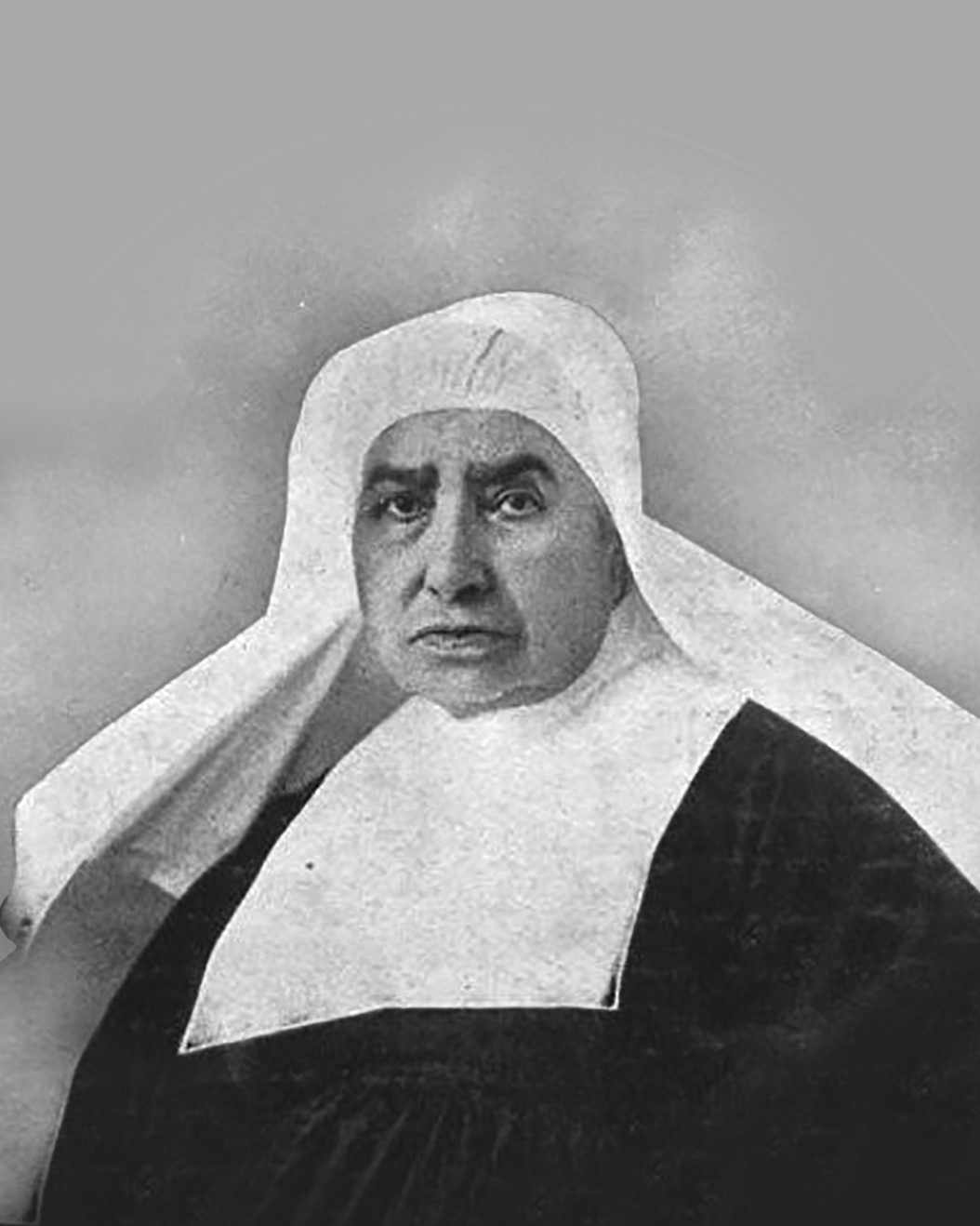
Daughter of Charity of Saint Vincent de Paul
Location of the plaque: C/ Alta, 31-33 (Parlamento de Cantabria)
1849-1920
Ramona Antonia Ormazábal y Goicoechea, better known as Sor Ramona Ormazábal, was born on 31st August 1849 in Tolosa (Guipúzcoa). At the age of nineteen she joined the Company of the Daughters of Charity of St. Vincent de Paul, after a period of training at the Royal Novitiate in Madrid. She was assigned to the then Hospital de San Rafael in Santander (now the seat of the Parliament of Cantabria) on 6 October 1868, where she spent her entire life as a Daughter of Charity.
At that time, the Hospital was home to three different works: the House of Charity, which took in people lacking family protection, especially children; the Inclusa, which admitted children of unknown parents or those abandoned by them and abandoned orphans; and the Hospital for the city's poor sick.
Due to Sor Ramona's qualifications and personal qualities, she was soon appointed secretary of the Foundation, and in 1888, Local Superior of the Community, a position she held until her death. One of her main achievements was the foundation of the Maternity Home, on land separate from the Hospital, in order to establish the Inclusa and Maternity Hospital there. In 1886 the separation of the two institutions from the Hospital became a reality and the children were freed from contact with the wounded and sick.
Although Sister Ramona shone for her gifts in government, her most outstanding work was her charitable dedication, which was most evident in times of plague, catastrophes and wars that affected Santander in those years. He had an outstanding attitude and behaviour in episodes such as the Third Carlist War, in his service to the cholera patients in 1885, a tragic year for Santander, in the explosion of the steamship Cabo Machichaco on 3 November 1893, which killed 500 Santander citizens and caused hundreds of serious injuries, showing that he was up to the task of caring for the victims. It also attended to the flu epidemic of 1918.
The Diputación de Santander, given Sister Ramona's humanitarian and charitable work, requested the Gran Cruz de la Beneficencia for her, which was awarded to her on 14th September 1918 and conferred on her on 18th January 1919. The ceremony was held at the Hospital de San Rafael.
Sor Ramona died on 20 January 1920 and her remains rest in the Pantheon of Illustrious Men in Santander; the fact that she was a woman led to a change in the name of the Pantheon, which was renamed the Pantheon of Illustrious Persons.
As a tribute to her dedication and help to others for more than 50 years, it has been decided to place the plaque as Illustrious of Santander in the building where she cared for so many people.

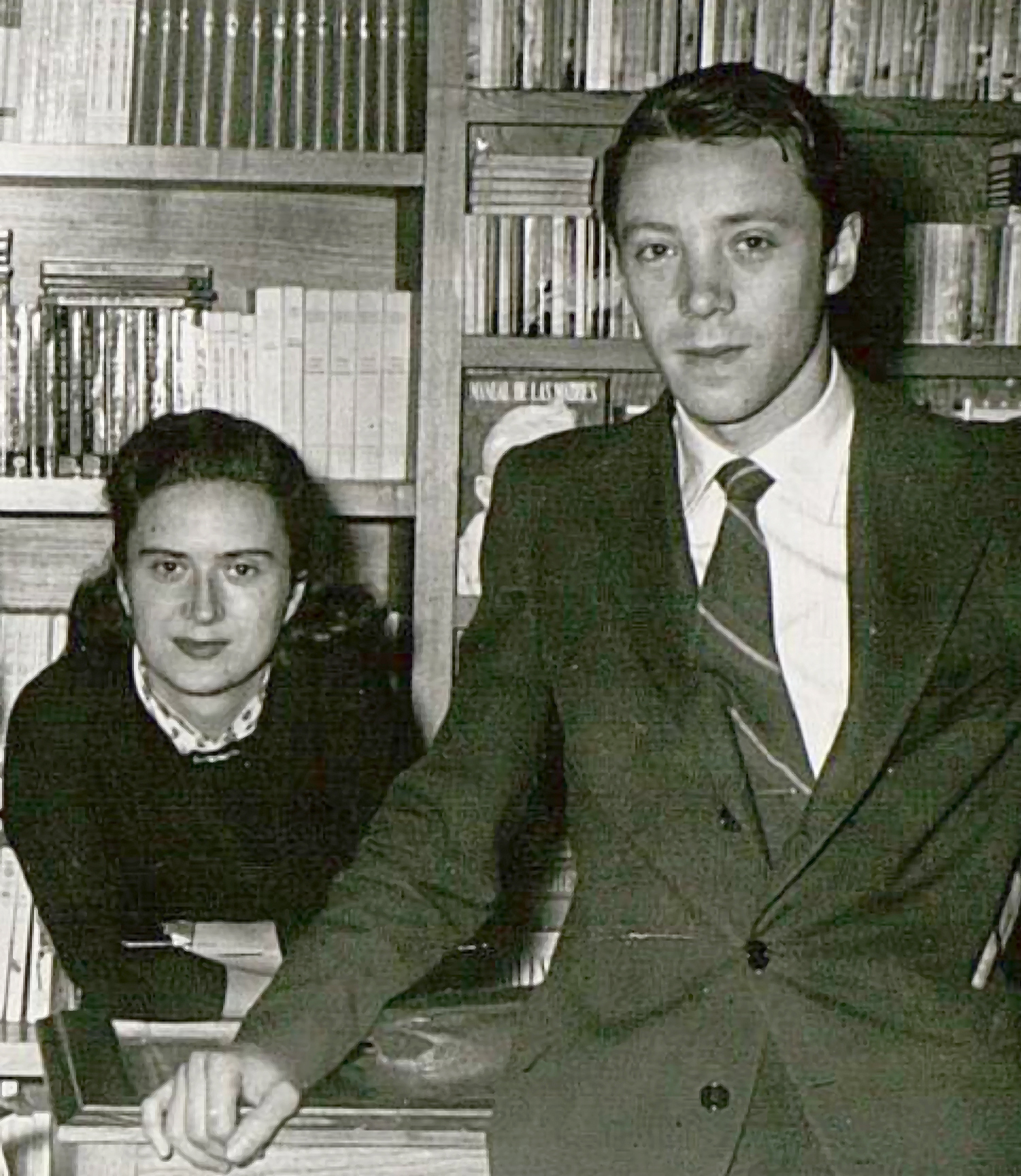
Owners of the first private art gallery in Santander
Location of the plaque: C/ San José, 20
The lives of Manuel Arce and Teresa Santamatilde have always been linked to literature and art, so much so that before they got married, on July 8, 1952, they inaugurated the Galería Sur, on 20 San José Street, where the plaque as illustrious artists of the city, becoming the first private art gallery in Santander.
Manuel Arce proposes to the Cantabrian painter Pancho Cossío to inaugurate Galería Sur with his exhibition. Cossío's skepticism about the initiative to open a gallery causes him to reject the proposal. Without falling into discouragement, he manages to inaugurate it with an exhibition by the painter Benjamín Palencia. Shortly after, in 1952, Ángel de la Hoz held his first photographic exhibition there. Others follow, by the ceramist Llorens Artigas and the painter Juan Manuel Díaz Caneja.
Against all odds, the bet paid off and the gallery hosted works by artists from the so-called Escuela de Madrid such as Francisco Arias, Álvaro Delgado, Agustín Redondela, Luis García Ochoa and Cirilo Martínez Novillo. Of the renovating circles in Catalan painting of the time, Francisco Todó, María Girona, Josep Guinovart, Albert Ràfols-Casamada and Antoni Tàpies stand out, and the representatives of Cantabrian painting: Agustín Riancho, Pancho Cossío and César Abín. In the sixties, some names were repeated and others were added, such as Gregorio Prieto and José Caballero, Joan Josep Tharrats, Manuel Millares, Fernando Zóbel, Salvador Soria, Alfredo Alcaín, or Mari Puri Herrero. From this decade, the protagonists of the exhibitions are Joaquín Peinado, Francisco Mateos, Hernando Viñes, Eusebio Sempere and Cristino Mallo.
The monographs of the work of María Blanchard and Óscar Domínguez stand out; the Cossío anthology and collective works such as European Masters, with works by Marc Chagall, Juan Gris, Fernand Léger, René Magritte and Giorgio Morandi. Also noteworthy is the exhibition dedicated to Contemporary Classics, which is celebrated coinciding with the gallery's 25th anniversary, with pieces by Eduardo Chillida, Julio González, Georges Braque, Vassily Kandinsky, Joan Miró and Pablo Picasso.
By decision of its owners, the South Gallery closed in 1994, after more than 42 years of activity, with 617 exhibitions by 545 different avant-garde artists, both internationally, nationally and regionally.
Manuel Arce Lago was born on February 13, 1928 in San Roque del Acebal (Asturias) but at the age of 8 he arrived in Santander, where he studied Commerce and participated in poetic publications in local magazines, such as Espadaña and Proel.
He founded the magazine La Isla de los Ratones, in which his first work appeared in 1948,“Sonetos de vida y propia muerte”, and from 1955 he dedicated himself exclusively to the novel with works such as “Testamento en la Montaña”, by the which obtained the Concha Espina Prize in 1956. In 1958 he won the Abarca Prize with “Pintando sobre el vacío”. And in 2006, with “El latido de la memoria”, he obtained the Emilio Alarcos International Novel Prize.
During the period 1985-1997 he was president of the Social Council of the University of Cantabria from 1985 to 1997, and from 1986 to 1988 he was a councilor in the Santander City Council.
His passion for art led him to also work as a literary critic in magazines in Madrid and Barcelona.
In 2011, the Santander City Council awarded him the city's Silver Medal and in 2014 he was awarded the Plaza Porticada Award, for his undisputed relevance in the cultural context of the Cantabrian capital and the region.
Manuel Arce died in Santander on June 14, 2018. The gallery owner, writer, editor, poet and politician kept his entire life linked to letters and art.
Teresa Santamatilde Pardo was born on December 21, 1929 in Santander, a city where she studied accounting, shorthand and typing. Working at the academy she studied, Asunción Inda meets her future husband Manuel Arce. From the opening of the Galería Sur until its closure, she served as art gallery owner, bookseller, editor and press manager for the gallery itself. Teresa was in charge of keeping the accounting of the Sur Bookstore and Art Gallery, and as responsible for the economic decisions, strategy and daily management of the business, she had the initiative to install a bookstall at the UIMP, which she personally managed. and granted it the unofficial title of "Librera del Palacio de la Magdalena".
The Santamatilde family is closely linked to the arts, since Francisco Santamatilde, Teresa's brother, was a renowned photographer internationally, considered the savior of Altamira, since he was the one who, in 1975, realized that the tones of colors of the bison and the deer of the Altamira cave had lost that intensity.
On October 19, 2023, Teresa Santamatilde dies in Santander, having become a protagonist in the cultural and artistic history of her hometown.
In the place where the Librería y Galería de Arte Sur was located, today there is an optician that preserves the upper window with the sign of the establishment in which both Manuel and Teresa worked so hard to position Santander as a city of culture.

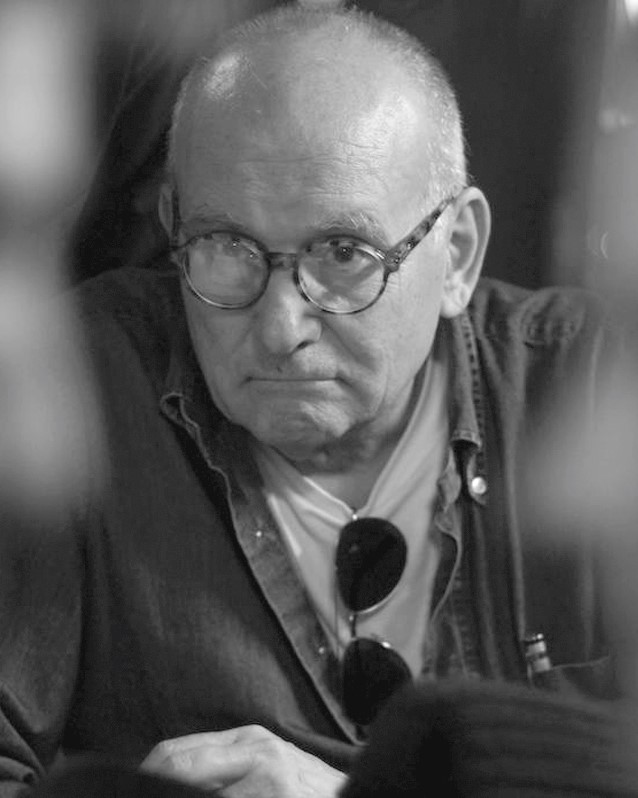
Film director and scriptwriter
Location of the plaque: C/ Cisneros, 38
1935-2021
Mario Camus García was born on 20 April 1935, at number 38, Cisneros Street in Santander, where the plaque has been placed as Illustrious of the city.
His childhood revolved around his studies at the Colegio de La Salle, basketball and the films shown in the cinemas of Santander. He later enrolled at the Faculty of Law in Madrid, where he became friends with Basilio Martín Patino, who had enrolled at the Instituto de Investigaciones y Experiencias Cinematográficas (IIEC), which later became the Escuela Oficial de Cinematografía. It was Patino who encouraged Camus to drop out of law school to sit the entrance exam for this institution.
It was during his stay at the Film School that he began his film career, taking part in projects with fellow students and writing screenplays, such as the film "Los golfos" in which he collaborated for Carlos Saura. In 1963 he graduated in Directing with the practice of two short films entitled "El borracho" and "La suerte". That same year he shot his first feature film, "Los farsantes", very much in the social line of what was called New Spanish Cinema during that decade.
In the 1970s he made a documentary about Santander for the series "Conozca usted España", on Televisión Española. It was his first work in television, although it was in this medium where he offered a sample of his good work with such outstanding series as "Cuentos y leyendas", "Los camioneros", "Curro Jiménez", "Fortunata y Jacinta" and "La forja de un rebelde".
His career took a turn that established him in Spanish cinema, with films that achieved great notoriety for their expressive power, the rigour with which they approached their subjects (in general the Spanish post-war period, seen from different angles) and the general work of the staging, with an indisputable leading role for actors who knew how to enhance their craft. Films such as "La colmena" and "Los Santos Inocentes", which had great repercussions in Spain and abroad and won numerous awards, stand out.
Among his extensive cinematography there are several films linked to Cantabria such as "Después del sueño", "Sombras en una batalla", "Adosados", "El color de las nubes", "La playa de los galgos" or "El prado de las estrellas".
In 2011 he received the Goya of Honour from the Spanish Film Academy. Before that, in 1985, he received the National Cinematography Award from the Ministry of Culture, two Goyas from the Spanish Academy of Cinematographic Arts and Sciences and the Honorary Award at the Gala de las Letras de la Ciudad de Santander for his contribution to the literary world, transferring renowned works to the big screen.
He died in his hometown on 18 September 2021. His remains rest in the Pantheon of Illustrious Persons of Santander since 9 September 2022.

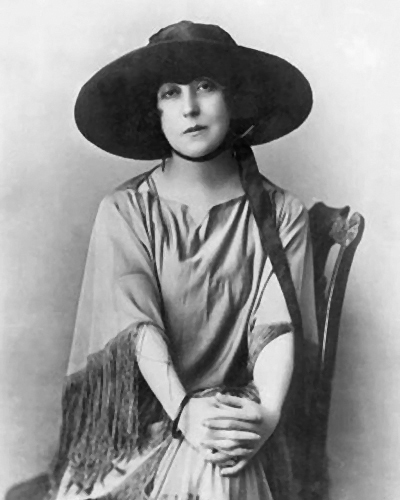
Writer. She was a finalist for the Nobel Prize for Literature on three occasions.
Location of the plaque: C/ Méndez Núñez, 4
1869 – 1955
María de la Concepción Jesusa Basilisa Rodríguez-Espina y García-Tagle, known as Concha Espina, was born at number 4, Méndez Núñez Street in Santander on 15 April 1869, the place where the plaque has been placed as Illustrious of the city and where she lived until she was 13 years old. Later his family moved to Mazcuerras, to the home of his paternal grandmother.
In 1888 she first published her verses in El Atlántico de Santander under the anagram Ana Coe Snichp, using up to five pseudonyms over the years. In 1893 she married Ramón de la Serna y Cueto, cousin of the illustrious painter María Gutiérrez Cueto, better known as María Blanchard, with whom she shared a great friendship.
In 1907 she won a literary competition organised by the Santander magazine La Semana, whose jury was chaired by Marcelino Menéndez Pelayo, with a story entitled "El Rabión".
She then moved to Madrid with the aim of publishing his first novel "La niña de Luzmela", with the support of the Menéndez Pelayo brothers and the poet José del Río Sainz. She began to collaborate in the ABC newspaper, in the magazine Lecturas, in Santander newspapers and in specialised publications.
In 1909, the publication of his first novel, "La niña de Luzmela", opened the way to success, with a prose of great idiomatic correctness and full of lexical richness and poetic nuances.
From a chronological point of view, she belongs to the Generation of '98, which places her in the Silver Age of Spanish literature. Her style is, broadly speaking, that of a writer who wanted to be a poet and who turned to prose on the advice of Marcelino Menéndez Pelayo. In 1914 she published "La esfinge maragata" with which she received the Fastenrath Prize of the Royal Spanish Academy in its fifth edition. This was the first time it was awarded to a female writer.
In 1926 she became the first Spanish writer to be nominated for the Nobel Prize for Literature, an award for which she was nominated on eight different occasions, becoming a finalist on three consecutive occasions (1926, 1927 and 1928).
In 1927, Alfonso XIII awarded her the Band of Noble Ladies of Queen María Luisa, given to her for the first time for literary merit, and the change of name for her maternal town, Mazcuerras, which would henceforth be called Luzmela, in homage to the novel with which she made her name. He also offered her a noble title, that of Marquise of Luzmela, which she did not accept. That same year she was awarded the National Literature Prize for her work "Altar Mayor".
Her works are an extension of the realism of the period, to which lyrical and sentimental elements are added. Moreover, Concha Espina was oblivious to the stylistic innovations and ideological concerns of her time. Her landscapes and types are a renewal of the work of José María de Pereda.
In 1950, he was awarded the Medal for Work. He died in Madrid on 19 May 1955, after receiving numerous awards, leaving works that were highly appreciated by the public for the history of literature.

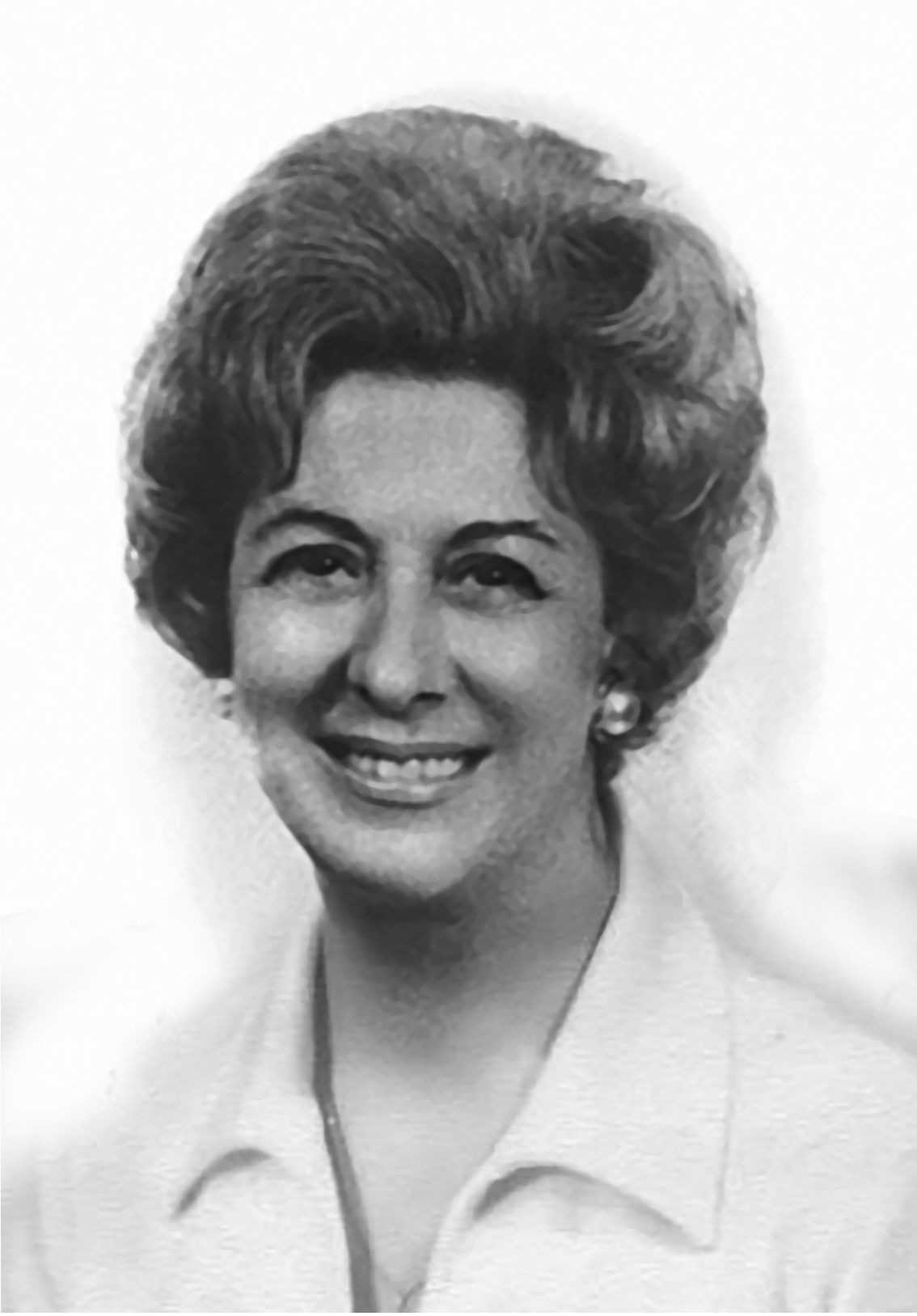
Writer, researcher and poet
Location of the plaque: C/ Cuesta de la Atalaya, 3
1919 – 2012
Aurora Matilde Gómez Camus, known as Matilde Camus, was born on 26 September 1919, in the central Cuesta de la Atalaya in Santander, where the plaque has been placed as Illustrious of the city.
Her mother died 28 days after her birth, so her relationship with her father and her paternal family in Monte was very close. As a child she is extremely sensitive, with a slight tendency to melancholy, observant and in love with the freedom she feels in the countryside and the beautiful and multiple tones of nature in Cantabria.
She was educated at the Colegio San José and studied for her baccalaureate at the Instituto Santa Clara. She was a pupil of Gerardo Diego, who was already a famous poet and awarded her the best marks. Camus was a great reader, and from an early age she corresponded with Celia, the character created by Elena Fortún, and with other young readers, through the children's supplement of Blanco y Negro: Gente menuda.
She began to attend literary gatherings at the Santander Athenaeum, of which she ended up becoming president of the Literature Section and her husband the secretary. Together they formed part of the MAS group (Movimiento Artístico Santanderino). The poet Gerardo Diego is considered her teacher, and his positive review of her book "Voces" encourages her to publish it in 1969, which she signs as Matilde Camus, in memory of her mother. Gerardo Diego breaks his rule and sends her an original Prologue with music, which he presents at the Ateneo in Madrid.
She also contributes to various periodicals, writing research papers on biographies of poets from the mountains and has won numerous literary prizes, including the First Prize for Poetry from Amigos del Arte and the Pluma de Oro at the XXII International Competition of the Pontzen Academy in Naples.
Since 1972 she has been a member of the Centro de Estudios Montañeses, thus completing a wide lyrical career and becoming one of the most renowned writers in Cantabria, as she has written 35 books of poetry, 3 poetic children's stories, 10 books of research, in which she analysed the history of Cantabria. She also wrote essays and gave papers at conferences.
Her deep ties with the village of Monte led him to carry out an exhaustive research work on this place with works such as "Historia del Lugar de Monte", "Efemérides del Lugar de Monte I" and "Efemérides del Lugar de Monte II" in 1995. He wrote the lyrics of the Hymn of Monte, which was set to music by Manuel López Fernández in 1986. There is a permanent exhibition of his complete written work, his paintings, prizes, work material, etc., in the "Salón de Actos Matilde Camus", in the Centro Cultural Fernando Ateca.
She died in Santander 20 days after her husband, on 28 April 2012. The mortal remains of both lie in the family vault in the Monte Cemetery, according to her wishes.

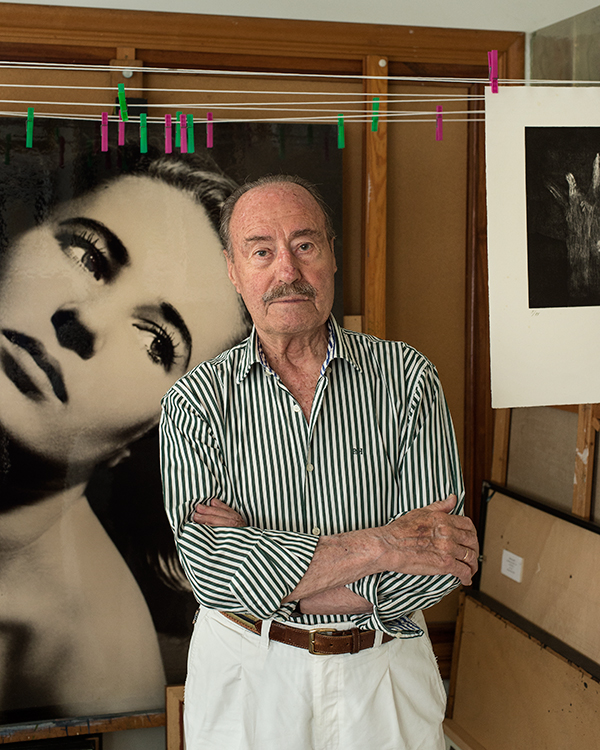
Photographer and painter
Location of the plaque: C/ Hernán Cortés, 59
1922 – 2019
Ángel de la Hoz was born in Solares on 5 April 1922, into a family fond of photography.
In his professional career we can distinguish different stages. During his training he set up a painting studio with the painter and ceramist Miguel Vázquez. During these years he practised the photographic technique, and later opened his own photography studio in Santander, where he specialised in portraits. Later he came into contact with the Proel group, with whom he collaborated graphically in their publications.
During the fifties he organised four exhibitions, alternating between photography and painting, both in Santander and in Torrelavega, Reinosa, Vigo, Gijón and Valladolid. He practised and introduced the monotype painting technique in Cantabria. Later he founded the Sala de Arte Delta with Fernando Baños and won the First National Negtor Photography Prize. He also collaborated during this period with the Agrupación Fotográfica de Almería, a group that renewed photography in Spain.
In the seventies he closed his photographic studio to the public to devote himself more intensely to illustration, with publications such as the Libro de Santillana, the first colour covers of the magazines Arte Fotográfico and Luna y Sol, and the poster for the first edition of the FIS. He also produced various collections for book editions, posters and mural photographs, such as those for "El Románico" and "Museos de Cantabria".
In 1978 he became a member of the board of the Association of Plastic Artists of Cantabria and in 1979 he founded the Cagiga collective, with which he held exhibitions in Torrelavega, Avila and Madrid.
As a researcher, he participated in the publication "Cien años de fotografía en Cantabria" and in "La Enciclopedia de Cantabria". In addition to these activities, he is also interested in photographic heritage, managing the former Municipal Photographic Archive of Santander, now the CDIS.
In the early nineties he retired from professional photography to devote himself fully to painting and publishing books. Since 2007 the exhibition hall of the Centro de Documentación de la Imagen de Santander (CDIS) bears his name, being also one of the main supporters, donating in 2014 his personal photographic archive, more than 18,000 images, in different formats.
He died in Santander on 23 February 2019, becoming one of the most prominent names in the history of photography.
As a tribute to the great painter and photographer Ángel de la Hoz, a plaque como Illustrius of Santander, has been placed on the building of Calle Hernán Cortés, 59, where he lived.


Poet, critic, novelist and translator
Location of the plaque: C/ Amós de Escalante, 2
1831-1902
Amós de Escalante y Prieto was born in Santander on 31 March 1831, in the house where the plaque of Illustrius is located. His father, Cornelio de Escalante, was mayor of the city, and his mother Petronila Prieto, a descendant of prestigious mountain lineages. He studied at the Cantabrian Institute, as did José María de Pereda and Marcelino Menéndez Pelayo. In 1960 he graduated in Physics, Mathematics and Chemistry at the Central University of Madrid and subsequently travelled around Italy, France, England and Germany. Between 1865 and 1866 he worked on an interim basis at the Ministry of the Interior. However, his passion and literary vocation led him to write articles in the Santander and Madrid press.
In March 1860 his mother died, and from that moment onwards his literary activity multiplied in various newspapers. In 1880 he married María de la Colina y de la Mora and moved to the Cantabrian capital, which he would not leave until his death.
He was a contributor to the press, poet, critic, novelist and translator. He was appointed corresponding member of the Royal Academy of History and the Royal Spanish Academy, member of the Santander Monuments Commission, chronicler of the province and knight of the Royal and distinguished with the Order of Carlos III. In 1871 he was proposed to the Royal Academy of History by Aureliano Fernández Guerra, Francisco Javier de Salas, Facundo Riaño and José de Godoy y Alcántara, and was admitted to the Academy's Board on the following 12th January.
As a journalist he contributed to El Semanario Pintoresco Español, La Época, La Ilustración Española y Americana and, in Santander, La Atalaya, El Boletín de Comercio and El Atlántico as well as the Revista cántabro-asturiana, among other publications.
He used both prose and verse, signing his work with the pseudonym Juan García.
His archaeological and erudite interests and his attachment to the traditions of his homeland, as well as his preference for the aesthetics of romanticism, led him to successfully cultivate the genre of the historical novel.
Among his most outstanding books are "Costas y Montañas", published in 1871, and "La mujer de Santander", published in 1872. In 1899 he published the work "Antigüedades de Cantabria", in which he alluded to the discovery made by his brother-in-law, Marcelino Sanz de Sautuola, of the paintings in the Altamira cave.
He is one of the most outstanding members of the school of the mountains. He died on 6 January 1902 in the house where he lived all his life, located in the Becedo neighbourhood of Santander. As a tribute to his legacy, person and talent, the street has borne his name since 1907.

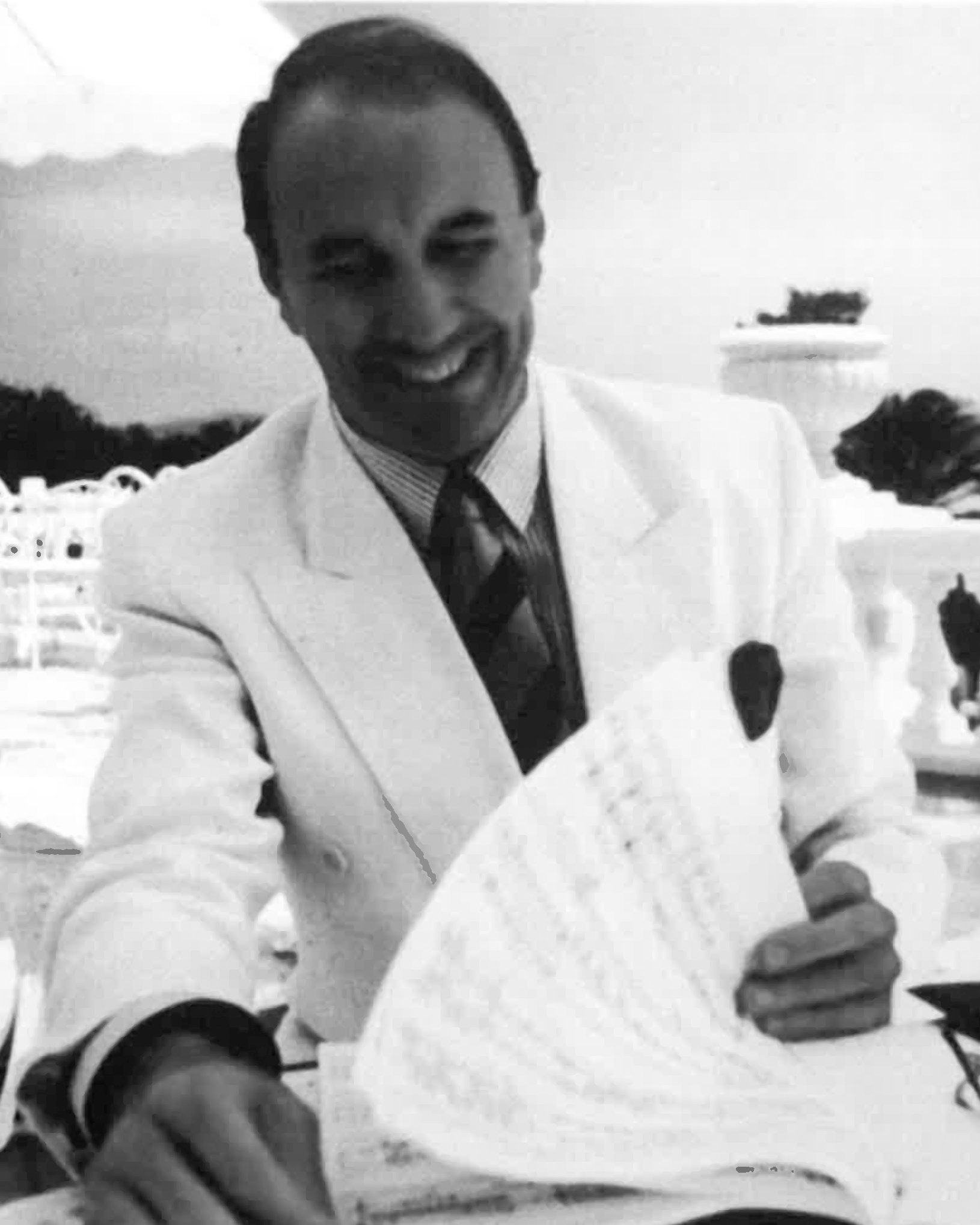
Piano concert pianist
Location of the plaque: C/ Marcelino Sanz de Sautuola, 15
1941-1995
José Francisco Alonso Rodríguez was born in Santander on 16th April 1941. As a child he stood out for his great passion for music, especially the piano, beginning his studies with Teresa Fernández Pondo and Lutgardo Morgañón. He later continued his studies in Madrid thanks to a scholarship, receiving classes from Julia Parody, and later completed his training at the Santa Cecilia Academy in Rome. He won the Positano Piano Competition and thanks to this prize he was admitted to Munich by Professor Wilhelm Kenff. He returned to study in Paris, and then moved to Saltzburg and Vienna, where he continued to live until the end of his life, alternating with Santander.
He made his debut at the Vienna Konzerthause. He played in Eastern Europe (for example, in Chopin's birthplace in Zalazowa), in the United Nations and Asia. He was the first Spaniard to give a concert in the People's Republic of China, in 1982, for which he was selected "Montañés del Año" by the Ateneo de Santander that year.
As a soloist he performed, among others, with the Prague Symphony Orchestra, the Stuttgart Philharmonic, the Salzburg Camerata, the Hungarian National Philharmonic, the Vienna Symphony and the Orchestre de la Suisse Romande.
In 1986 he was appointed director of the Ataúlfo Argenta Conservatory in his native Santander, with the aim of creating a centre of musical excellence. As a teacher and great piano performer, he set out to transmit his technique and style to his students, and so he organised meetings and courses dedicated to the performance of the piano sonatas of Beethoven, Schubert and Mozart. Thus, in September 1986 he organised the "1st International Course on Beethoven's Sonatas" at the Municipal Conservatory. Shortly afterwards, he left the post of director of the centre, but such was his influence that the first classroom of the centre was named after him: "Aula José Francisco Alonso".
In 1988 he founded The Vienna International Pianists, for the promotion of young pianists. He was jury-advisor of the Concurso Internacional de Piano de Santander Paloma O'Shea and of the Festival Internacional de Santander, an event in which he participated on several occasions, as well as in the international competitions of Tokyo, Leeds, Moscow and several others. In 1992, he was appointed Cultural Ambassador of the city of Kezen, Japan.
In the last summers of his life, he organised International Piano Courses at Schloss Loosdorf, Austria, attended by Japanese, Chinese, Cuban, Brazilian and Spanish students.
He died on 22 March 1995 in Mistelbach, Austria, becoming one of the most important and internationally recognised Spanish musicians, who performed Spanish and classical music in countries as far away as the Arab Emirates, Japan, China, Cuba, India, Russia, Brazil and Poland, as well as regularly in Austria and Spain, especially in Cantabria.
Due to his international fame, it has been decided to place a plaque as Illustrious of the city of Santander in the building where he was born and lived.

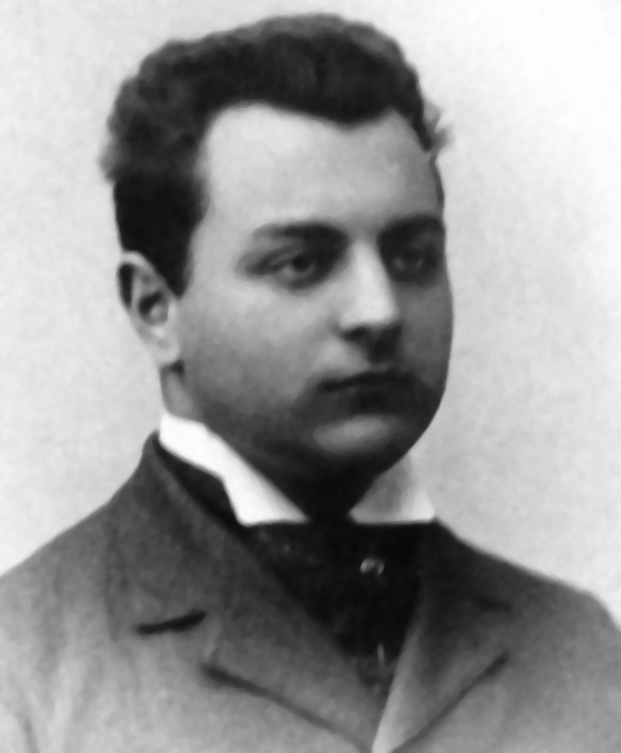
President of the Centro de Estudios Montañeses de la Filosofía
Location of the plaque: Plaza de Pombo, 4
1880-1958
Marcial Solana González-Camino was born on 7 October 1880 into a cultured family, specifically in the building where the plaque is located as Illustrious of Santander.
He studied Philosophy and Law at Deusto, and obtained his doctorate in Philosophy and Law at the Central University of Madrid. He dedicated part of his life to research and study and became a multifaceted writer, as he is the author of works on Philosophy, History, Politics, Sociology and Theology.
He was a member of the Royal Academy of Moral and Political Sciences, president of the Centro de Estudios Montañeses, member of organisations such as the Menéndez Pelayo Society, the Higher Council for Scientific Research (CSIC) and the Board of Trustees of the Prehistoric Caves of Cantabria, and was even made a Knight of the Order of Malta. He was very active in the development of the cultural life of Santander (Menéndez Pelayo Library, Ateneo, UIMP, Santa Clara Institute, etc.).
His love for his land led him to take the step into political activity and to found an agricultural union in the Villaescusa valley, a town of which he was mayor in the first decade of the 20th century.
He was the chronicler of the Real Valle de Villaescusa, the municipality in which his family home was located, specifically in La Concha, where he devoted himself to study and relaxation. He represented Santander in the Cortes in 1916. He was regional head of the Integrist Party in Castilla la Vieja and was elected to the Cortes in 1916. In 1931 he became a member of the Traditionalist Communion.
His most famous work is the "Historia de la Filosofía Española. Época del Renacimiento (Siglo XVI)", in which he shows the immense intellectual work carried out by the Spanish thinkers of that period. He won several awards, such as the Conde de Torreánaz Prize (1928) and the Echegaray Prize (1940).
He died in the city of Santander on 15 October 1958 and was buried in the family vault in the cemetery of La Concha de Villaescusa.

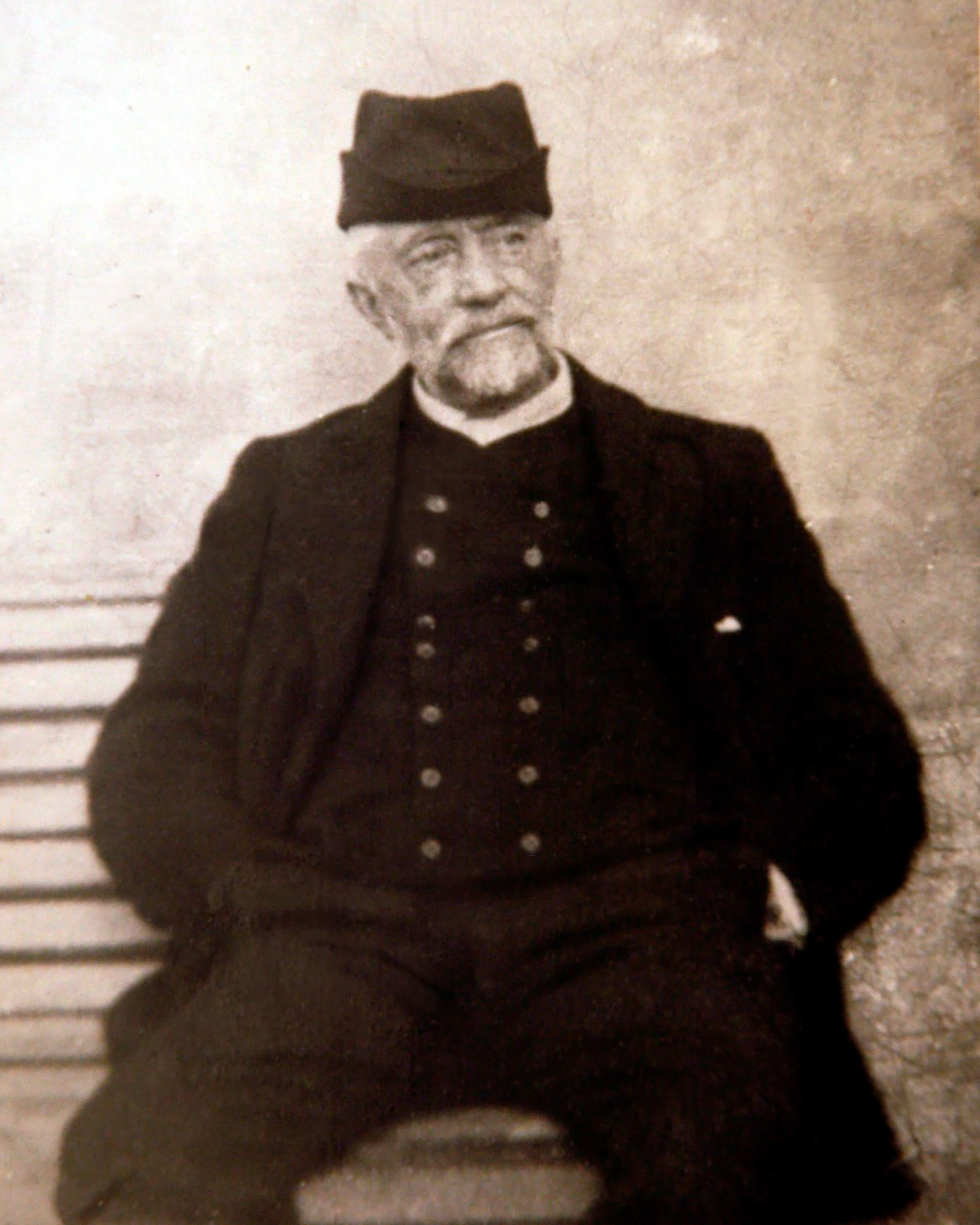
Surgeon and writer
Location of the plaque: C/ Santa Lucía, 51
1850-1942
Enrique Diego-Madrazo y Azcona was born in Vega de Pas on 28th February 1850. He attended primary school there, and later moved to Valladolid, where he obtained a Bachelor of Arts degree. He later obtained a doctorate in Medicine and Surgery at the University of Madrid.
As soon as he obtained this doctorate, he practised medicine in the village of Espinilla (Reinosa), until 1874, when he visited Germany, where he was taught by Von Wolkman. It was then that he became interested in the teachings of Claude Bernard, Pasteur and Lister on Physiology, Microbiology and Antisepsis, becoming one of the first Spanish doctors to apply them. In 1876 he sat the competitive examination for the Military Health Corps and took charge of a ward in the Military Hospital in Madrid.
In 1893 he was appointed director of the San Rafael Hospital in Santander, but the following year he decided to practice on his own and founded a sanatorium in his home town of Vega de Pas. On the strength of its success, he decided to open another one in Santander, closing the previous one, with greater patient capacity and resources, which became an international reference hospital that attracted many members of the scientific community at the beginning of the 20th century. In Santander, he set up a School of Local Doctors and Surgeons and published a Bulletin of Surgery at the sanatorium.
Doctor Madrazo is one of the figures who should be included within Spanish regenerationism due to his concerns as a doctor, pedagogue and playwright. In 1910 he applied his innovative pedagogical methods in the secular public schools he founded in Vega de Pas, with the aim of giving children freedom and contact with nature.
Consolidating his literary inclinations for essays, politics and theatre on the cultivation of the human species, from 1912 to 1913 he became the impresario of the Teatro Español in Madrid, with the unconditional support of his friend and writer Benito Pérez Galdós.
He died in Santander on 8 November 1942, leaving behind him a scientific and cultural legacy that not only enriched the capital of La Montaña but also the entire autonomous community.
The plaque as Illustrious of the city of is located at number 51, Calle Santa Lucía, where the Sanatorium of Doctor Madrazo was located from 1896 to 1982, founded by this figure who was able to absorb all the medical-surgical advances in Europe in the second half of the 19th century and then apply them in Spain, especially in terms of asepsis and antisepsis and scientific experimentation which far exceeded his expectations and would later be applied in all the hospitals in the country.

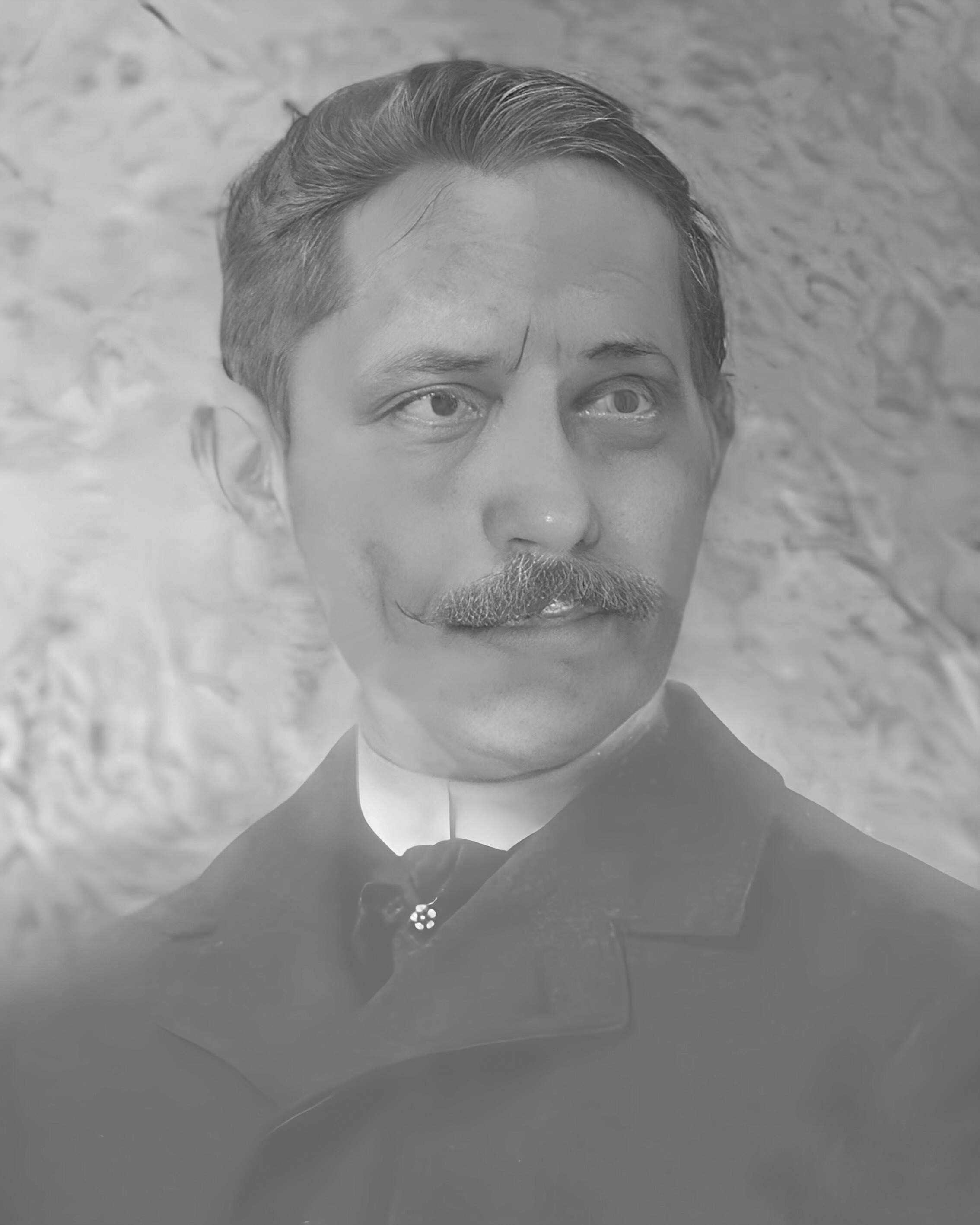
Architect
Location of the plaque: C/ Gómez Oreña, 15
1843-1895
Atilano Rodríguez Collado was born in Santander in 1843 and studied at the Special School of Architecture in Madrid, where he graduated in 1866. Before completing his training, in 1864, he won the Silver Medal for a Chapel at the International Exhibition of Agriculture, Industry and Fine Arts held in Bayonne. Later, with another of his projects, he was awarded the third medal at the National Exhibition of Fine Arts in 1867.
As soon as he finished his studies he was appointed head of provincial and municipal civil constructions in Pontevedra, where he lived for several years and directed important constructions. Due to family matters he left Pontevedra and returned to his native city, where he was appointed municipal and provincial architect of Santander.
His career as a municipal architect began with the development of the marginalised areas where the commercial activity of the city was located; among them, the road that reached the Sardinero around the Bay, the Alameda Primera and the Plaza de Numancia.
His style, based on a highly eclectic language in terms of forms and means, characterised the architecture of the period, as well as a spatial rationalisation that encouraged the creation of new architectures. This type of architecture was key to the urban composition of Santander as we know it today.
Another of the posts he held was that of head of the works of the concessionary company of Muelles de Maliaño, and later, director of the drawing classes at the Carbajal Institute in Santander.
Rodríguez Collado was the personal architect of the renowned businessman Juan Pombo, participating in the projects for the old Casino, the Gran Hotel and the Pombo family's palace-house. Likewise, together with Severiano Cecilia, he participated in the construction of the first headquarters of the Banco Santander in Paseo Pereda in 1875, which gave way to the great building divided by a large arch over Calle Marcelino Sanz de Sautuola, which is one of the great urban landmarks of Santander.
Between 1872 and 1892, he also carried out important works in the city centre, such as the extension of the Muelle de Calderón quay and some remodelling that gave rise to the definitive appearance of the Plaza de Pombo and the Plaza de Cañadío. He built the Colegio San José and six years later one of his most singular buildings, the house of the gynaecologist Joaquín Cortiguera.
His good taste, elegance and rationalisation of space made him a well-known architect ahead of his time, as he was also committed to modernisation and the creation of new architecture, being a pioneer in the introduction of elements that made people's lives easier. He was the first architect to introduce a freight elevator in one of his buildings and also to install a cistern for the use of water. For all this, Atilano Rodríguez was awarded prizes in several international exhibitions and one national exhibition.
His most emblematic works also include the Club de Regatas, as well as a series of houses in the main streets of the city, such as the building located at number 15 Gómez Oreña, where the plaque has been placed as an illustrious personage of Santander, as this is where he lived until his death on 20 April 1895.
